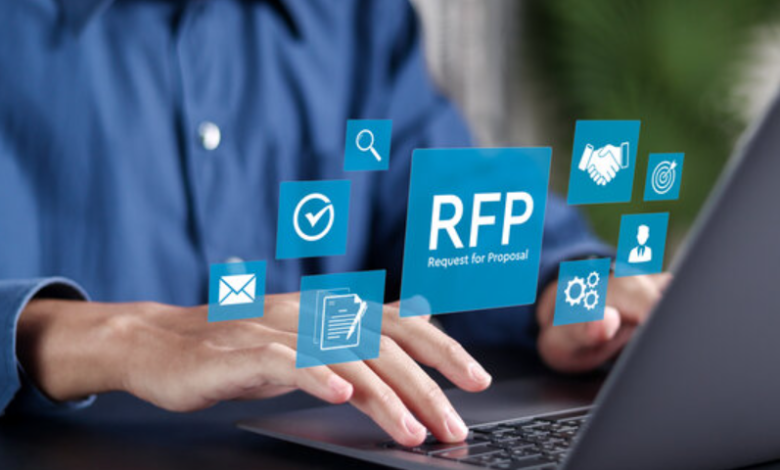Strategies for RFP Software: Streamlining Procurement Processes

The current business scenario shows that many organizations are taking advantage of advanced technologies to improve the convenience and efficiency of procurement. One such management tool is RFP software that plays a vital part in procurement process management. While organizations strive to reach maximum efficiency when making procurement decisions, knowing about the strategies regarding requests for proposals using RFP software becomes essential.
Understanding RFP software
One of the most important concepts associated with RFP (Request for Proposal) software is understanding how it can be used to manage the purchasing process more effectively. RFP software offers as one of the most important platforms for an organization where RFP can be easily created, managed, and distributed for example; templates, questionnaires and terms and conditions. It facilitates barrier-free communication with suppliers, eliminating ambiguity and keeping the detailed outlay of information unchanged during the bidding process. Vendor evaluation and scoring, including the use of pre-established criteria and scoring techniques, not only decreases the complexity of the vendor selection process but also allows this task to be accomplished promptly.
Moreover, RFP software includes analysis and reporting engines that help in the visualization of vendor behaviour and proposal outcomes thus making decision-making and the improvement of the process easy. Through the utilization of such features, businesses can become more transparent, efficient, and able to collaborate within procurement teams, which is one of the pillars for profitable vendor relations and contracts being signed. The RPF software is the main factor in the modernization process of procurement operations and in resolving the bottlenecks in sourcing.
The main keys to implementing RFP software
The deployment and use of RFP software is a process that requires good preparation and procedure to be productive.
- Define clear objectives
While introducing RFP software, it is crucial to mutually define the objectives and goals of the organization. This implies highlighting weaknesses that exist in the existing procurement process, for example, slow response evaluation times, and inefficient vendor management. By describing such specific goals as cutting the cycle down, improving cooperation with suppliers or standardising valuation criteria, organizations can shape up their software implementation strategy by their goals.
- Choose the right software
Deciding which RFP software to go with is very crucial. Organizations may evaluate software products by taking into account the following features: functionality, scalability, ease of use and integration capability, vendor support, etc. Leading RFP software solutions usually come with advanced features of customized templates, collaboration within a safe environment, and elaborate analytics tools. Selecting a suitable option is the key to software development, as it needs to be in line with the company’s needs and infrastructure.
See also: Balancing convenience and privacy: navigating smart tech in life
- Standardize processes
To get maximum leverage from the RFP software, it is very important to develop well-structured RFP procedures. This entails developing unified forms, assessment criteria, and work procedure stipulations to make sure that the execution of procurement practices is uniform across all procurement projects. If the organization sets standardized procedures, it will simplify vendor interaction, levelling up the response quality and the quality of decision-making in the result.
- Promote Collaboration
RFP software enables the process of procurement to work smoothly by making it possible for all the stakeholders such as Purchasing teams, legal departments, and finance professionals to be engaged in the procurement process. The cross-functional collaboration supply guarantees that each of the representatives takes part in the RFP preparation, evaluation, and negotiation during the process. Often, the real-time features within collaborative software programs gear up transparency and accountability.
- Automate routine tasks
Automation is probably the major strength of RFP software. By simplifying some regular processes such as document generating, contacting the vendors tracking the responses without manual effort and decreasing mistakes, corporations can save lots of time. Automation not only reduces the time for RFP, but it also helps organizations to allocate their limited resources for strategic planning.
- Set strong security mechanism
Information within procurement data can be critical; hence, in the course of implementation of RFP software, distinct safety aspects cannot be avoided. Organizations shall give preference to ideas that incorporate high-level data encryption, IT access control, and audit trails to ensure secure data exchange all along the procurement process. Industry standards that include GDPR or HIPAA also necessitate the need to be compliant with them.
- Harness analytics for insight
RFP software helps to generate statistical data and to make reports. The tools should be used by companies to check performance metrics, compare the responses of vendors and look for chances of optimization. Through the utilization of accessible data, procurement teams will optimize their strategies, conduct more efficient contract negotiations and bring ongoing efficiency into the procurement procedures.
- Create a training and support system
The use of the software for RFP tracking required well-developed training and support for users. Training should be a crucial element of the implementation plan – a program consisting of multiple sessions and exercises designed to make stakeholders acquainted with the software’s features and abilities. The fact that RFP software has continuing technical support and user assistance means that teams can fully exploit the capabilities of this software and the issues that may arise are addressed promptly.
Advantages of RFP software implementation
The use of the RFP software offers significant advantages for organizations who desire to be on the leading edge in the procurement process. For instance, it is an avenue which takes efficiency to a great level by improving the RFP process, cutting the cycle times and enabling faster vendor selection. T
he second aspect is that RFP software aids in facilitating transparency in supplier interactions and processes throughout the acquisition cycle thereby guiding accountability. Third place, it fosters the reduction of expenses through the streamlining of procurement leads to faster and more successful bilateral agreements and resource allocation.
Moreover, the RFP software is responsible for maintaining compliance as it makes certain that both regulatory requirements and internal procurement policies are being administered and, in this way, minimizes risks which may be associated with non-compliance. Along with that, it encourages good vendor relations and positive outcomes because communication and cooperation have improved and the partnership has become stronger. All of that helps businesses achieve their goals. Ultimately, software RFP gives organizations a means to design successful procurements by implementing operational efficiency, transparency, cost-effectiveness, compliance, and vendor engagement.
Conclusion
Having an analysis, modern procurement is no longer even possible without the top procurement software, especially the RFP software. In this way, it speeds up the processes, ensures cooperation and simplifies work. Managing bids strategically through defining goals, selecting a worthwhile software provider, standardization processes, and leveraging analytics can serve as a basis for the improvement of procurement standards. The use of automation with RFP software which encompasses innovation is the determinant factor for organizations to be able to embrace dynamic market rules and provide added value in the supply chain. By leveraging the right procurement software, corporate environments can indeed exploit the potential of the procurement function and turn it into the privilege they have.






